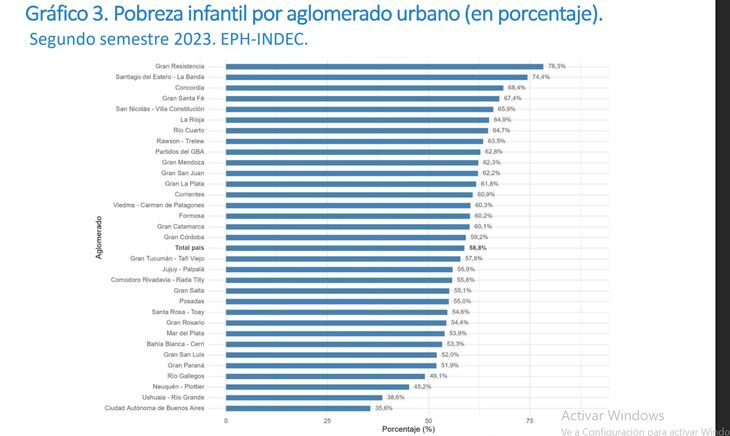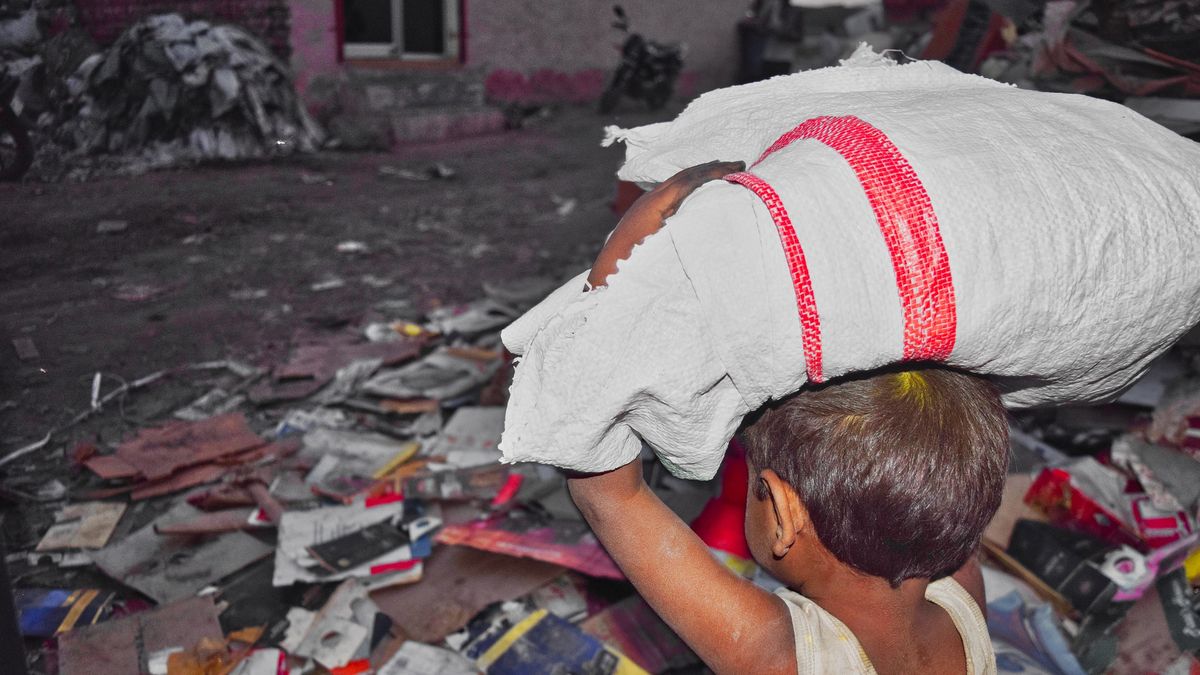According to the report prepared by Valentina González Sisto and Ianina Tuñón for the Argentine Social Debt Observatory (ODSA-UCA), Child poverty in the country continues to exceed 50% and reached its most critical point in the first half of 2024, with 67.3% of girls, boys and adolescents under the poverty linein what was the highest figure since the crisis of 2001-2002.
Although in the second semester of 2024 the index descended to 52.8%, the improvement was partial and did not reach all sectors of the country. Child poverty remains the highest among the age groups, reflecting a deeply unequal social structure.
The report, based on data from the Permanent Household Survey (EPH-INDEC), highlights that between the first semester of 2023 and the first of 2024 Child poverty rose more than 10 pointsfrom 56.6% to 67.3%. This deterioration occurred in a context of strong inflation – which accumulated 62.4% between January and June 2024 – and fall in purchasing power. During that semester, Poor homes had 42.6% revenues below the total basic basket.
In contrast, in the second half of 2024, thanks to some macroeconomic stability and increases in the AUH and the feed card, there was a decrease in the levels of child poverty, although not homogeneous throughout the country.
Screen capture 2025-06-15 105208.png
The report highlights that between the first semester of 2023 and the first of 2024 Child poverty rose more than 10 points.
Territorial inequality: which region suffers more poverty
The study highlights that The Argentine North, particularly the NOA and the NEA, continues to be the most beaten regionwith agglomerates such as Great Salta, Formosa, La Rioja, Gran Paraná and great resistance with infant poverty rates well above the national average.
“At the end of 2024, only Jujuy-Paláá manages to be located below the national average in those regions,” says the document.
Instead, The AMBA, the Centro and Patagonia region show more sustained improvementswith cities such as CABA, Mar del Plata, Bahía Blanca, Neuquén and Greater Buenos Aires closing the year with significant declines in the levels of child poverty.
The data reveal that When comparing the first 2023 semester with the second of 2024, some agglomerates managed to improve their relative situationsuch as Viedma, Gran Luis, Gran Córdoba and Rawson. On the contrary, others such as Great Catamarca, Posadas and La Rioja They saw their position worseconsolidating an increasingly unequal poverty geography.
“Although the national data improves towards the end of 2024, that improvement does not reach everyone: half of the agglomerates get worse,” warn the authors.
The report highlights the deep territorial inequalities that persist in Argentina. While in the City of Buenos Aires children’s poverty reaches 27.1% – the lowest level in the country – in Concordia the situation is alarming: three out of four boys live in poor homes, which raises the index to 75%, the highest registered nationwide.
Screen capture 2025-06-15 105230.png

Territorial inequality of poverty.
The increase of the AUH and the feed card was a palliative
During 2024, the Government applied significant increases in universal child allocation (AUH) -100% in January, 27% in March and 41% in June- and expanded the feed card. However, these efforts They were insufficient to compensate for the effect of inflation and loss of real income.
Summary of the UCA Child Poverty Report
- Among the first semesters (2023-2024) a generalized deterioration of child poverty was observed: practically no agglomerate escaped the impact of macroeconomic adjustment, and the real income of the most vulnerable households were strongly eroded. Among the second semesters (2023-2024) an extended improvement was recorded, explained by some macroeconomic stability, partial recovery of income and a real increase in AUH.
- The evaluation of the entire route 2023-2024 reveals divergent regional dynamics: while some agglomerates manage to recover (partially or totally) the 2023 levels, others do not show clear signals of improvement. Already pre -existing regional asymmetries intensify: agglomerates with structurally higher or lesser economic dynamism (in regions of the NOA or nea mainly) are the ones that suffer the most and less capacity they show to repurchase in front of the crisis.
- Recovery is not homogeneous: there are winners and losers. Some agglomerates show rebound signals, while others are lagging behind, which could reflect a geography of even more unequal child poverty. Without focused policies of protection and inclusion in the most lagging regions, it is difficult to think of a sustained recomposition. In these territories, the crisis not only left its mark: it is being deepened.
Source: Ambito




